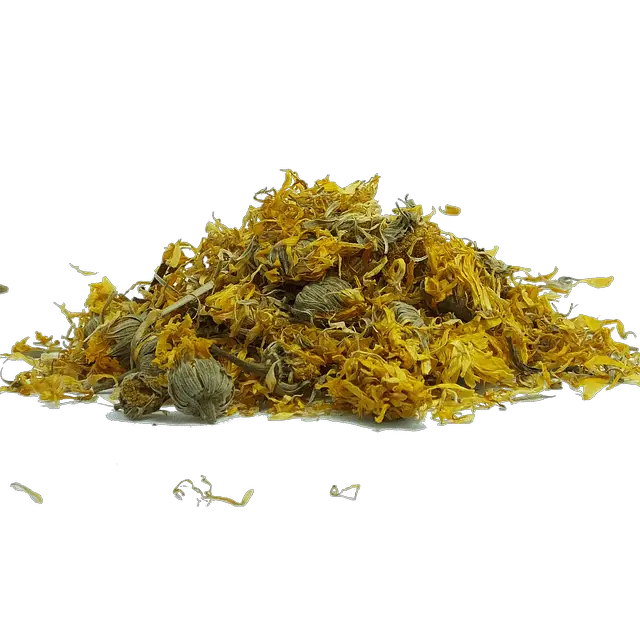Calendula isn’t a spice but a group of perennial plants more commonly known as marigolds due to its resemblance to that type of plant’s petals. Often referred to as the poor man’s saffron, it is used in a wide variety of applications and is sometimes used in place of saffron given its high price. Petals are typically yellow or orange hence the comparison to saffron.
So while calendula isn’t a spice it is often substituted for saffron and may also be found in a number of dishes given that the leaves are orange or yellow, edible and give off a bitter taste somewhat like saffron with a hint of tanginess and a peppery taste. You might find calendula in leafy salads, soups and tea as well as in desserts like tarts or preserves and sauces. And calendula is also increasingly used in medicinal and other non-food related products including in soap, as a body scrub, as a soothing balm and for inflammation relief among others.
Calendula Growth

Calendula is also referred to as a pot marigold so you might come across that name, too. The plant – it’s a plant not a spice – is grown in Asia and is also found in Europe where it’s believed to have originated. Given that it has a long history of being grown, it is widely available and is now grown throughout the world.
Although it is a perennial and may grow back each year, it often doesn’t survive very cold winters or very hot summers so it may need to be replanted. Having said that, it tends to grow well in temperate climates, grows in most types of soil and thus is considered a very versatile plant.
Calendula Food Uses
The leaves of a calendula are edible but on their own are rather bitter. So instead, calendula is instead used on its own as a garnish or ground up and used in place of a spice such as saffron. One of the main traditional uses of calendula was as a colorful addition to soups or broths, hence the name pot marigold. You put into a pot of soup to add color and flavor. Some people also use it bread to again add both color and flavor.
It’s also often used as a dye for clothing, food and cosmetics. In that regard, calendula is considered an all-purpose plant.
Calendula Medicinal Uses
Calendula has long been used for medicinal purposes due to its antibacterial, antifungal, and anti-inflammatory properties. While many perceived benefits haven’t necessarily been proven, the FDA has listed calendula as being one of the substances generally recognized as safe for human consumption. Calendula is grouped with spices and other natural seasonings and flavorings.
In that regard, calendula is used in a wide variety of medicinal products including body wash products like soap and scrubs as well as to treat muscle spasms, menstrual pain, inflammation and swelling. Calendula is often used both internally and topically for many ailments.
One particular area of research regarding calendula efficacy is in the area of wound healing. Research to date has suggested that a topical application of 2% – 10% calendula ointment or ethanolic extract may assist wound healing but that more study needs to be done before a more definitive result can be concluded.
Having said that, other medicinal claims such as the ones mentioned above are yet to be conclusively confirmed.
Keys To Buying
Unlike a spice which you would typically just purchase for ease of use, you could choose to grow pot marigolds (calendula) in your garden if you chose. Numerous products are available that incorporate calendula in creams, ointments, lotions, face scrubs, toners, and other cleansing and skin relief products as well.
While many claims are made regarding its ability to help treat sunburns, skin inflammation, cuts, scrapes and other injuries, care should be taken when purchasing such products with note given as to what percentage of calendula is contained therein. As mentioned above initial research suggests at range of 2% – 10% is required at a minimum.

